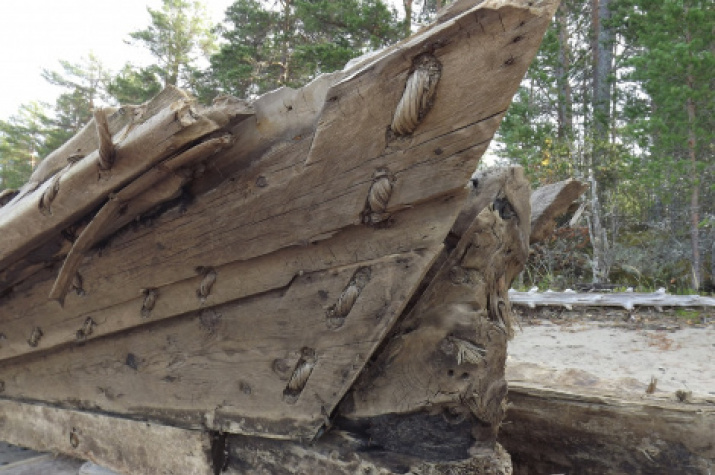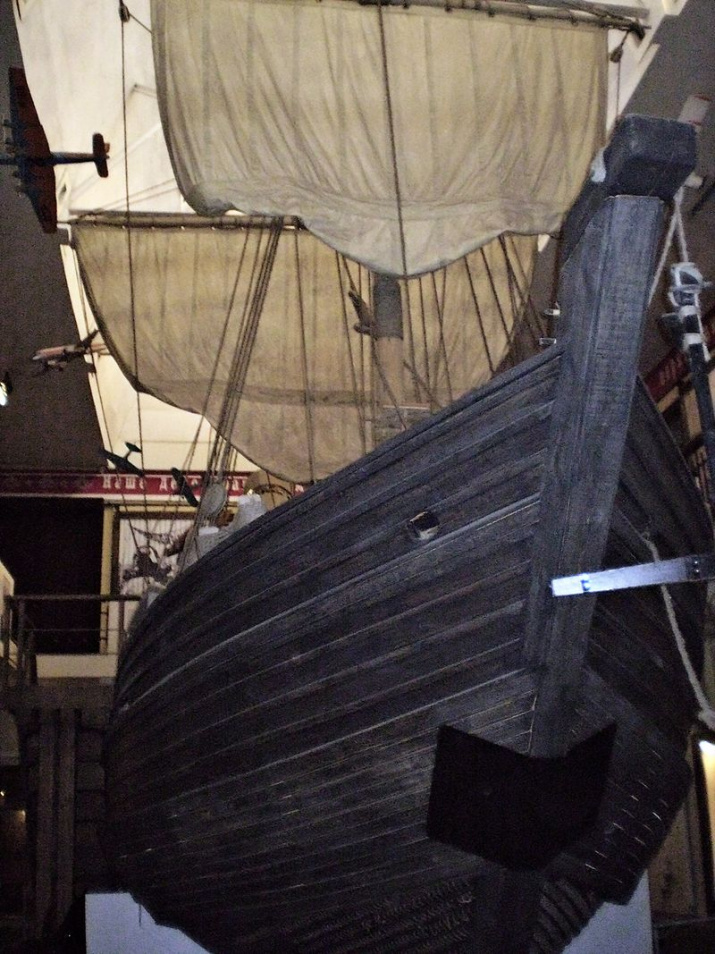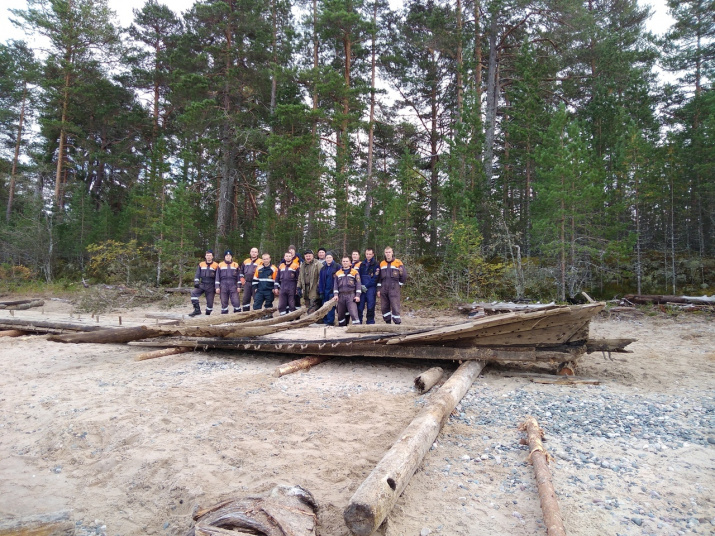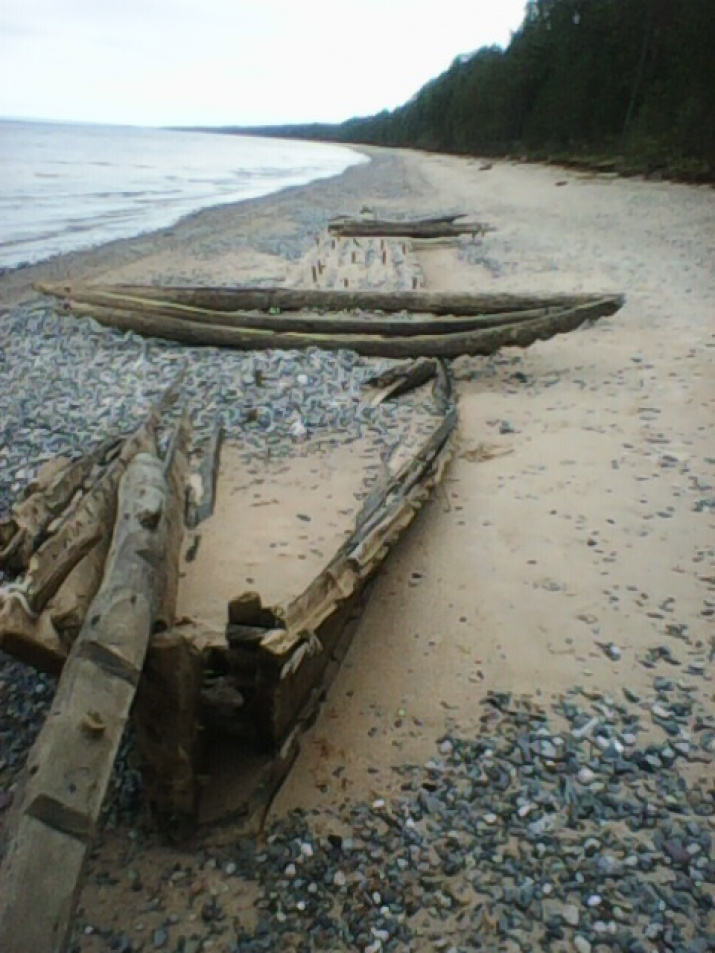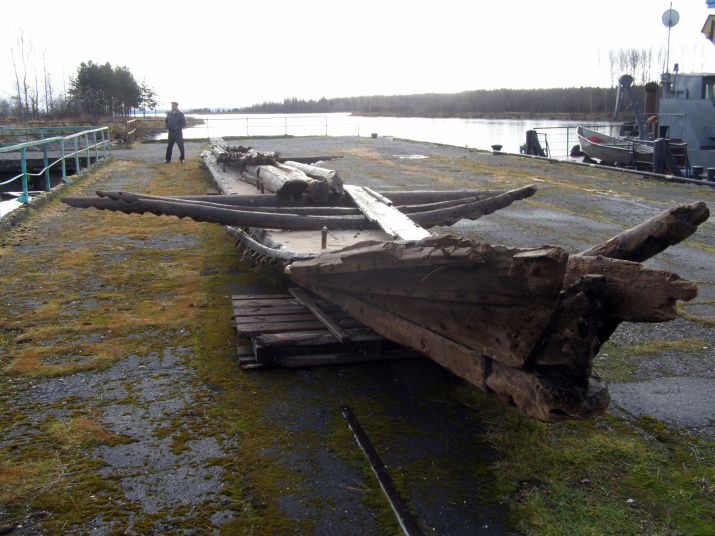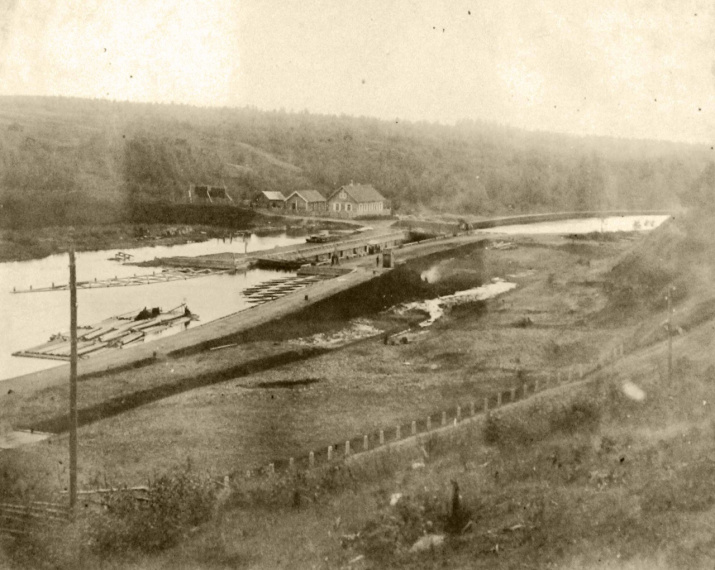The vessel, whose wreck was thrown on the shore of Lake Onega, is called by experts as a dinosaur of domestic shipbuilding. This is the only original Russian ship of pre-Peter the Great period in the world. Afanasy Nikitin went on this kind of a vessel, and Semen Dezhnev made his way to Kamchatka through the ice on this kind of vessel too. Why did this ship become a sensation in the scientific world? Why is it preserved well? What scientific secrets does the vessel keep in itself? Everything is in detail in our material.
Miracle Phenomenon
Valery Pirogov, a resident of Vytegra in the Vologda Region, makes boats since childhood. So, indeed, it is not surprising that Lake Onega presented the find to Valery.
“We found the wreck while walking in the forest. Just the mere sight of this was impressive. Somehow we immediately thought that it had to be saved. We measured the wreck in steps and it turned out to be about 22 meters. It was telling and it became clear that such things could not be found every day.”
The wreck of the vessel was look like a whale, or a dinosaur. Valery admits: "I work with wood. When I saw the ship, I understood: this technology has not existed for a long time and this is a very old, complicated construction". The resident of Vytegra told local historians about his find. They did not believe their eyes when they came to see the wreck. The first analyzes of wood confirmed: the vessel rested at the bottom of Lake Onega for more than 300 years!
Now scientists call the wreck as a miracle phenomenon. They identified it as a koch - the Pomors vessel resembling a nutshell. It was “sewn” by a special technology: when huge ice floes clamped the ship from all sides, it “jumped” to the surface.
“Its sides are stitched with roots and branches of pine and spruce. Some of the samples belong to 1633–1634, the rest samples are from 1649, the vessel may had been rebuilt in 1650,” says tha Chair of the RGS Regional Branch in Vologda Hadezhda Maksutova.
It was on the koches that Semyon Dezhnev and Fedot Popov sailed from the Kolyma River to the Anadyr River in 1648 and they were the first Europeans that went to the North Pacific. According to one version, Afanasy Nikitin traveled on a similar vessel. This single-masted sailing ship with oars could overcome up to 200 kilometers per day in good weather conditions. Construction length is from 20 to 25 meters, width is up to 6.5 meters. Experts qualify shitik as one of the first icebreaking vessels.
Experts from around the world have been arguing about shipbuilding in pre-Peter the Great Russia for many years. Some people say, that the tsar-reformer brought Dutch technology after his European tour and taught the Russians marine business. Opponents of this version were also there, but they could not provide real samples of Russian shipbuilding because time is merciless to wooden ships. Now historians have a strong argument proving that the Russians really built vessels of a decent level.
The ship is threatened by drafts, temperature extremes and parasites on the land. How did it come about that the koch surfaced in such a state three centuries later after its loss? And why did it happen just now? Scientists just have to find out the answer, but Igor Zubov, the director of the Vytegorsky Historical and Ethnographic Museum, has a version.
Igor Zubov:
"Most likely, the vessel had a heavy cargo: it went along the coast of Lake Onega - there is a lagoon closed from the southern wind from Karelia, it is shallow and safe. And when the ship went out into a large Onega and fell under its wind, most likely, it was thrown onto stones near Peter and Pavel Cape. In this place, the rocky ridge goes toward Onega. Most likely, the ship crashed there. People died and the ship sank. It rested on the bottom pressed down by cargo for a long time.
Such an artifact is a unique case in the area of Lake Onega. There are suggestions that the ship was built in Vytegra, because shipbuilding traditions existed there since ancient times. There were two shipyards and two sails manufactories in the XVII – XIX centuries. Up to one hundred ships were built there in a productive year. The Pomors sailed on similar vessels not in the lake, but in the White Sea. Koches rarely entered any internal rivers or canals because of their size. According to experts, the story of the ship will be interesting to disclose. What kind of cargo was on the side? Whose direction was it to carry the cargo? Is there an opportunity to find the cargo and raise it from the lake bottom?
It is just the beginning
A unique artifact washed up on the shore in August 2018. Pieces of the koch scattered at a distance of three kilometers on the shore of Lake Onega. A floating crane, a barge, free locking were provided for the evacuation of the wreck. Rescuers from the arctic rescue center of the Ministry of Emergency Situations of Russia in the Vologda Region "Vytegra" removed the koch from the water's edge, transported it to Vytegra at the cargo berth of the river station.
Frozen vessel is under the jurisdiction of the Vytegorsky Historical and Ethnographic Museum. Igor Zubov built a wooden sarcophagus for the find, that protects the treasure from environmental threats.
"It was a necessary measure, because initially we wanted to put it in the hangar, but the owners didn’t let us in. And there is a reason: if they would let us in, that would be good, but we even don't know how long we need it." - says Zubov.
The Vologda Regional Branch of the Russian Geographical Society helps to keep the Pomors koch: members are looking for historians and restorers, and they are negotiating with scientific institutes. The Chairman of the RGS Regional Branch in Vologda Nadezhda Maksutova confirms that the vessel is in surprisingly good condition and has not destroyed, and the December frosts have worked for it as a cryochamber.
And yet, koch can turn into dust without attentive attitude. Scientists have known cases when rare artifacts were stored in an oxygen-free environment for centuries, and then became dust for a couple of months. Experts of the Institute of Archeology and the Russian Geographical Society have to make a decision on the method of its preservation until the onset of spring heat. Experts will arrive at the scene and determine the fate of the find on February 22. Expectations are great. For example, Elena Savicheva, a leading researcher at the Vytegorsky United Museum, who personally examined the vessel, said: "If the wood will be cleaned and dried, the vessel can be stored for hundreds of years." Technology is available.
Significance for science
It was believed that it was hardly possible to restore the appearance of ancient Russian ships before the vessel found in Onega. There were just separate structural elements: boards, fasteners, parts of the frame. Scientists have established: the Pomors connected the boards of the ship's hulls with iron rivets with square clinksibes. The same method was used in construction of the North European ships of the time. But more often, instead of rivets they used gad (thin tree roots, fir branches or branches of bushes) that were connected boards to each other, or, as they said in old times, were "sewed". This method was used in construction of the found vessel. It was a "walk around technology" used to make the construction cheaper in the face of iron deficiency.
According to historians, the found koch illustrates two important things. First, the old Russian shipbuilding kept pace with the European one. Secondly, the production technology is not borrowed, but has local roots. The basis of the boat has been preserved - and it is unique for every nation, as the DNA code. Elena Savicheva, the leading researcher at the Vytegorsky United Museum, believes that thanks to the Vytegorsky instance, the culture of traditional wooden shipbuilding can be revived.
Koch can be used as a model for a small original miniature. And then there could be buit a fleet for tourists and explorers. But for these ideas a desire and money are needed.
Oksana Vezler

